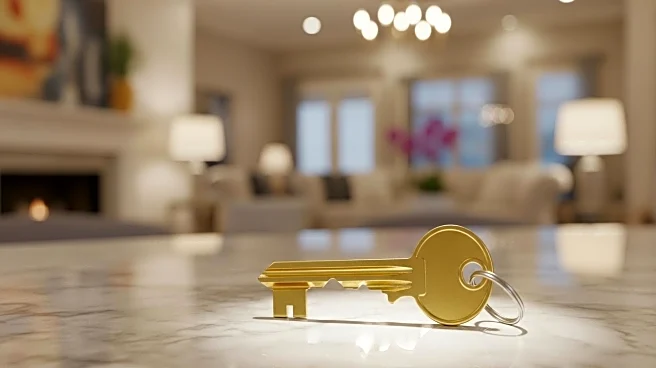What's Happening?
Villa Charlotte Bronte, a historic co-op in the Bronx, is experiencing an unexpected increase in property listings. Known for its scarcity in sales, the Italian-inspired villa has seen three of its 17 units hit the market recently. Available units include a three-bedroom for $1.24 million, a two-bedroom for $949,000, and a one-bedroom for $649,000. This surge in listings is unusual for the co-op, which has historically seen few sales, with the last recorded sale before 2024 occurring in 2021. Brokers attribute this activity to natural turnover, as residents age or seek different lifestyles. The villa, constructed in 1926, is noted for its European architectural style and scenic location along the Hudson River.
Why It's Important?
The increase in listings at Villa Charlotte Bronte highlights a shift in the real estate market within historic co-ops. Such changes can impact property values and community dynamics, as new buyers bring different preferences and needs. The villa's unique architecture and location make it a coveted asset, often held for decades. This trend may signal broader changes in buyer behavior, as preferences shift towards properties with distinctive features and historical significance. The villa's market activity could influence similar historic properties, affecting real estate strategies and investment decisions in the area.
What's Next?
As the market adjusts to this unusual surge in listings, potential buyers may face increased competition for these rare properties. The villa's historical significance and unique features could attract interest from preservationists and real estate investors. Future sales trends will depend on buyer preferences and economic conditions, potentially leading to further turnover or stabilization in the market. The villa's management may also consider strategies to maintain its appeal and address any challenges posed by increased market activity.
Beyond the Headlines
The surge in listings at Villa Charlotte Bronte raises questions about the preservation of historic properties and their role in modern real estate markets. As buyers seek unique and historically significant homes, the villa's architectural and cultural value becomes a focal point. This trend may encourage discussions on balancing preservation with market demands, influencing policies and practices in real estate development.










